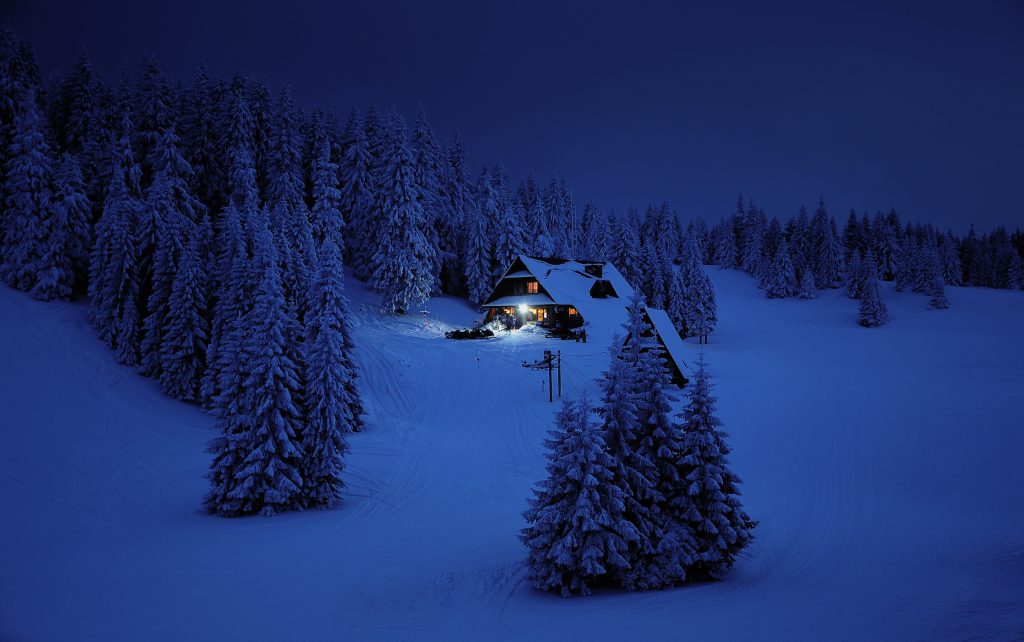Winter is just around the corner, and now is the time to ensure your home is ready for the colder months ahead. From sealing drafts to winterizing your plumbing, proper preparation can prevent costly repairs and keep your home warm and comfortable. This winter home maintenance checklist will guide you through the essential tasks to protect your property from the harsh weather while improving energy efficiency. Follow these tips to safeguard your home and enjoy a cozy, stress-free winter.

1. Inspect and Clean Gutters and Downspouts
Cleaning out your gutters and downspouts is a critical task before winter arrives. Clogged gutters can lead to ice dams, which can cause water damage to your roof and walls.
- What to Do:
- Remove leaves, twigs, and debris from gutters.
- Ensure downspouts direct water away from your foundation.
- Install gutter guards to minimize future build-up.
Why It’s Important
Blocked gutters can lead to serious water damage and expensive repairs, so take the time to clear them out before freezing temperatures set in.
2. Seal Windows and Doors
Drafty windows and doors can cause a significant loss of heat, leading to higher energy bills. Sealing these gaps will keep your home warmer and lower your heating costs.
- Steps to Take:
- Use weatherstripping or caulking to seal any cracks around windows and doors.
- Install a door sweep on exterior doors to prevent cold air from seeping in.
- Replace or repair damaged seals.
Pro Tip
Consider using thermal curtains for an added layer of insulation during the coldest months.
3. Service Your Heating System
Having your heating system checked by a professional before winter can prevent unexpected breakdowns and ensure it’s running efficiently.
- Checklist for Your HVAC:
- Schedule a professional inspection and cleaning.
- Replace air filters to improve indoor air quality.
- Test your thermostat to ensure it’s working correctly.
Why It’s Worth It
A well-maintained heating system not only keeps your home warm but also extends the life of your furnace and reduces energy consumption.
4. Inspect the Roof for Damage
Your roof is your home’s first line of defense against winter weather. Before the snow and ice arrive, inspect your roof for any damage that could lead to leaks or other issues.
- What to Look For:
- Missing, loose, or damaged shingles.
- Cracked flashing around chimneys and vents.
- Signs of mold or moisture in your attic.
Quick Tip
If you’re not comfortable inspecting your roof, consider hiring a professional to check for damage and make necessary repairs.
5. Protect Exterior Pipes and Faucets
Frozen pipes are a common problem in winter, leading to costly water damage. Take steps to protect your plumbing system before temperatures drop.
- How to Winterize Your Pipes:
- Disconnect and drain garden hoses.
- Install insulated covers on exterior faucets.
- Use pipe insulation on exposed pipes in unheated areas like basements or garages.
Prevent Costly Repairs
A burst pipe can cause thousands of dollars in damage, so insulating your pipes is a simple and cost-effective preventive measure.
6. Test Smoke and Carbon Monoxide Detectors
With the increased use of heating systems, fireplaces, and space heaters during winter, the risk of fire and carbon monoxide poisoning rises. Ensure your home is safe by testing these devices.
- Safety Checklist:
- Test all smoke and carbon monoxide detectors.
- Replace batteries if needed.
- Install additional detectors if your home lacks adequate coverage.
Stay Safe
Check the expiration date on your detectors—most need to be replaced every 7 to 10 years.
7. Prepare Your Fireplace and Chimney
A cozy fire is a perfect way to stay warm in winter, but it’s essential to ensure your fireplace and chimney are in safe working order.
- Fireplace Prep Tips:
- Have your chimney professionally cleaned to remove creosote build-up.
- Check for cracks in the chimney or fireplace structure.
- Ensure the damper opens and closes properly.
Why It’s Important
A dirty chimney can cause chimney fires, while structural issues can lead to smoke and carbon monoxide entering your home.
8. Check Your Home’s Insulation
Proper insulation is key to keeping your home warm and energy-efficient during winter. Adding or upgrading insulation in critical areas can make a significant difference in comfort and heating costs.
- Focus on These Areas:
- Attic: Insulate the attic floor and walls to prevent heat loss.
- Basement and crawl spaces: Add insulation to walls and ceilings.
- Exterior walls: Consider blown-in insulation for hard-to-reach areas.
Energy Savings
Insulating your home properly can reduce heating costs by up to 15%, making it one of the most effective ways to prepare your home for winter (EnergyStar, 2023).
9. Trim Trees and Remove Dead Branches
Winter storms can cause tree branches to break, potentially damaging your home or power lines. Take preventive action by trimming trees and removing any dead branches around your property.
- Tree Maintenance Tips:
- Trim branches that hang over the roof or near power lines.
- Remove dead or diseased trees that could fall during a storm.
- Hire a professional arborist for large trees or hard-to-reach areas.
Why It’s Essential
Falling branches can cause severe damage to your home and pose a safety risk during heavy snow or high winds.
10. Stock Up on Winter Essentials
Prepare for unexpected winter weather by stocking up on essential supplies. Having these items on hand will help you tackle winter emergencies and keep your home running smoothly.
- Must-Have Supplies:
- Snow shovels, ice melt, and sand for walkways.
- Emergency kit with flashlights, batteries, and blankets.
- Generator for backup power in case of outages.
Stay Prepared
Being proactive can help you avoid the last-minute rush and ensure your home is safe and comfortable during the worst winter weather.
Final Thoughts
Taking the time to complete these winter home maintenance tasks can save you money and prevent costly repairs down the line. From cleaning gutters to insulating pipes, each step is designed to protect your home from the harsh elements and keep it in top condition. Use this checklist to get your home ready, so you can enjoy a warm and worry-free winter season.
References
- EnergyStar. (2023). Insulating Your Home for Maximum Efficiency. Available at: www.energystar.gov.
- National Fire Protection Association. (2023). Fireplace Safety Guidelines. Available at: www.nfpa.org.
- U.S. Department of Energy. (2023). Winterizing Your Home: Best Practices. Available at: www.energy.gov.









